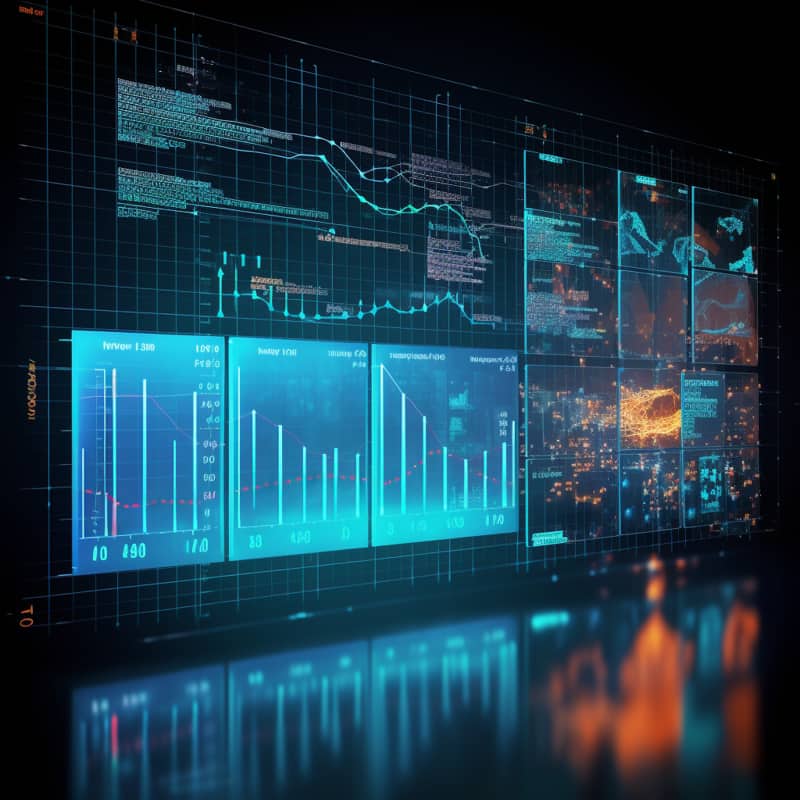OBIEE Interview Questions and Answers
Oracle Business Intelligence Enterprise edition is an in-depth data analysis and reporting solution featuring an intuitive user interface and numerous features designed to assist organisations with making intelligent decisions based on accurate, up-to-date data.

1. What is OBIEE?
OBIEE is an analytical reporting tool that extracts dimension tables and fact tables from data warehouses for users to produce various reports.
2. What is the purpose of OBIEE?
OBIEE organises business intelligence and analytical reporting by providing users access to multiple source systems for extracting, processing and creating reports using dimension and fact tables.
3. What should be done after selecting the main Oracle path and the root folder where installation will occur?
To avoid storage options from appearing again when clicking “next.”
4. What files are necessary to download before installing a Java-based system?
All necessary files, such as the web logic server and OBIEE files, should be downloaded before installing any Java-based system.
5. What should be done if an error related to the Java version appears during the installation process?
If an error related to the Java version occurs during installation, ignore it and move forward to the next step.
6. What is required for the installation of OBIEE?
Installation of OBIEE requires three components: Java an Oracle database and an OBIEE app, which should all be appropriately set up before beginning installation of this solution.
7. What is required to connect with the database in OBIEE?
To create an initial connection between OBIEE and their desired database, users will require information including their host IP, port number, database name, username and schemas in which they wish to establish connectivity.
8. What is the presentation layer in RPD?
RPD’s Presentation Layer conducts development work within its physical layer; its components include business models and mapping layers where dimension tables and fact tables can be imported into RPD.
9. What is a connection pool in RPD?
A connection pool in RPD is an object that holds all database details such as hostname, port number, database name, message content, username information or schema name information in one convenient place, and it has an expiry timer to ensure stability and availability for future connections.
10. What are metadata reporting tools?
Metadata reporting tools like SQL Developer import only table structures without data, providing a platform for communicating between databases.

OBIEE Training

This metadata reporting tool allows developers to manage connections among tables and visualise relationships among them.
12. What is Oracle Database’s default sample schema, SH, used for?
Oracle Database’s default sample schema SH is ideal for data warehouses and is frequently employed to analyse sales history.
13. What is a physical column in the Oracle Database?
Physical columns within an Oracle Database store the primary key, connection pool holes, and all the connection-related data of that database when right-clicking on the BMM layer in the Oracle Database.
14. What can you do when right-click on the BMM layer in the Oracle Database?
Right-clicking the BMM layer in the Oracle Database enables you to select tables and zoom out or in; concerning forgotten join conditions in the Oracle Database, its system automatically identifies them as fact tables.
15. Why must aliases be created in the BMM layer in the Oracle Database?
Aliases must be created within the Oracle BMM layer to eliminate circular joins and ensure one physical table can be utilised across different environments.
16. What is the primary responsibility of the presentation layer in RPD (Relational Database Management)?
In RPD, its presentation layer coordinates development work within its physical layer.
17. What is the function of the SQL Developer Platform?
SQL Developer Platform enables developers to manage table connections and visualise them effectively for visual representation.
18. Why is it essential to create aliases for each table in the BMM layer?
Aliases must be created for every physical table within a BMM Layer to avoid circular joins and ensure one physical table can be utilised across various locations.
19. How can users avoid circular joins in the BMM layer?
Users can avoid circular joins in the BMM layer by creating aliases for every physical table in the Oracle Database and only using them within that layer.
20. How can users display the same tabular data in graphs, tickle bars, speedometers, or maps by location using Oracle Database?
Oracle Database allows the display of tabular data visually using graphs, tickle bars, speedometers, or maps by location by importing all tables from RPDs into BMM layers.

OBIEE Online Training

21. What is a physical diagram in the Oracle Database?
A physical diagram in Oracle Database visually represents the relationship between two tables, such as product and sales tables, by showing only these tables and any links between fact and dimension tables.
22. What is the difference between logical join and physical join?
Logical and physical joins are used within this platform; respectively, they join tables by their analytical columns while physically linking two tables via physical columns.
23. What is the business model and mapping layer (BMM) in Oracle Database?
When required physical tables are pulled onto this layer via drag-n-drop, any required tables that were previously located elsewhere within Oracle will now also reside on the BMM layer for easier management and analysis.
24. What is the purpose of the physical diagram option in RPD?
RPD’s physical diagram option lets you visualise connections among tables visually.

To test your understanding, complete these multiple-choice.
25. Which of the following is not a step in installing a Java-based system?
Install JDK8
Download necessary files
Extract the Javapath from the D drive
Select the main Oracle path and root folder
26. What is the next step after selecting the create repository option?
Checking permissions
Installing components
Setting passwords
Creating the schema
27. What is the next step after configuring the O B-A application?
Install the O B-A application.
Create schemas for the O B-A database.
Connect O B-A to the data warehouse.
Launch the O B-A application.
28. Which of the following is not a building block of a data warehouse?
Diamond shirt tables
Fact tables
Transactional system
Analytical reporting tool
29. What is the business, model, and mapping layer in OBIE 12C?
Physical layer
BMM layer
Presentation layer
Diamond shirt tables

Conclusion
Preparing for an OBIEE scenario-based interview questions and answers requires a thorough understanding of the product and its features and the ability to apply that knowledge to real-world scenarios.
It is essential to articulate your thoughts clearly and logically and to provide specific examples to support your answers. Additionally, demonstrating a positive attitude and a willingness to learn are crucial to success in OBIEE admin interview questions.

OBIEE Course Price


Srujana
Author